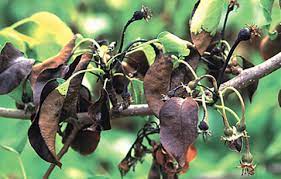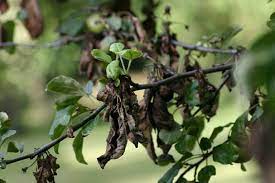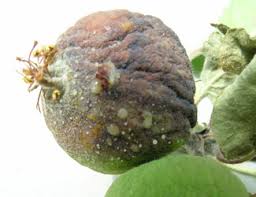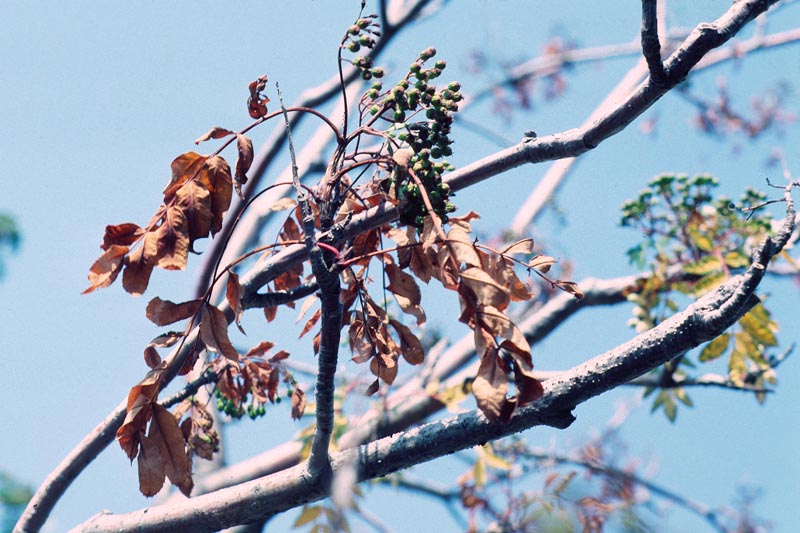Anyone that owns apple or crab apple trees has probably heard of the infamous fire blight. This bacterial tree disease is often blamed for every ailment and failing but is rarely the actual culprit. Alberta summers are less suitable for fire blight than warmer climates so are less common here but does happen none the less and should be taken very seriously if found. Fire blight spreads rapidly and will significantly damage its host and can easily cause decline.

Fire blight is a bacterial infection that targets plants in the rose family. The rose family includes apple, pear, crab apple, hawthorn, mountain ash, cotoneaster, and raspberries. The strain that targets raspberries do not infect apple or other trees and vice versa. As a bacterial infection it can spread to all parts of a tree and maintain its infection until the tree has died, by that time spreading to any other hosts nearby via wind, insects, birds, and water transference.

The markers for fire blight are where it gets its name. Leaves that look burnt around the edges. Fruit, buds, or even trunks with black markings oozing bacteria that attract insects. The dead leaves, buds, blossoms, and shoots will remain on the tree to maintain the infection and help it spread. If fire blight is discovered, it should quickly be addressed to prevent its spread to hosts in the area. Pruning out the infected parts or removing the entire tree if the infection is too severe should be the priority. The removed debris should be removed from site and destroyed. This pruning is best done during the dormant season when the bacteria is inactive and proper pruning technique used to reduce spread. A disinfection between cuts is advised especially if infected material may be cut or if the work is done by those with less experience.

Luckily fire blight is not suited to Alberta’s colder climate so its occurrence is usually localized and slower to progress than elsewhere, but if left unchecked will kill its host. As with all tree ailments the best prevention is to maintain healthy trees with proper amounts of nutrients, water, and sunlight. A healthy tree will resist infection better and recover faster. Copper sprays can be used in the early season to control potential infections. Excessive tree vigor will aid the bacteria’s spread so ensuring the tree is not stress growing before hand and that excess nitrogen applications are avoided will help reduce infection.
Web
http://omafra.gov.on.ca/english/crops/facts/fireblight.htm
Professional Reference
Denise Allen, ISA Certified Master Arborist, Jan 12, 2023
References
Wayne A. Sinclair & Howard H. Lyon “Diseases of Trees and Shrubs 2nd Edition”


